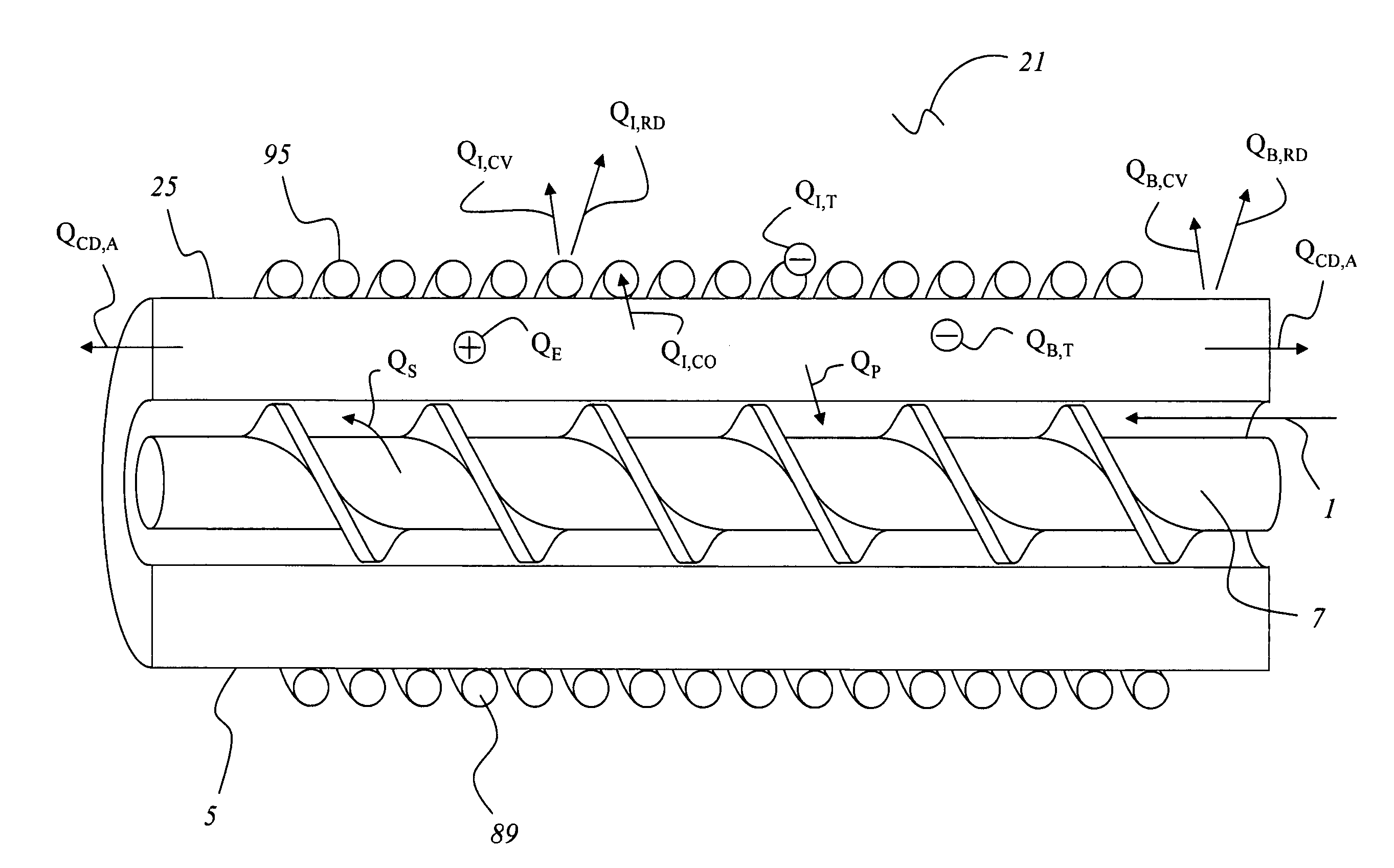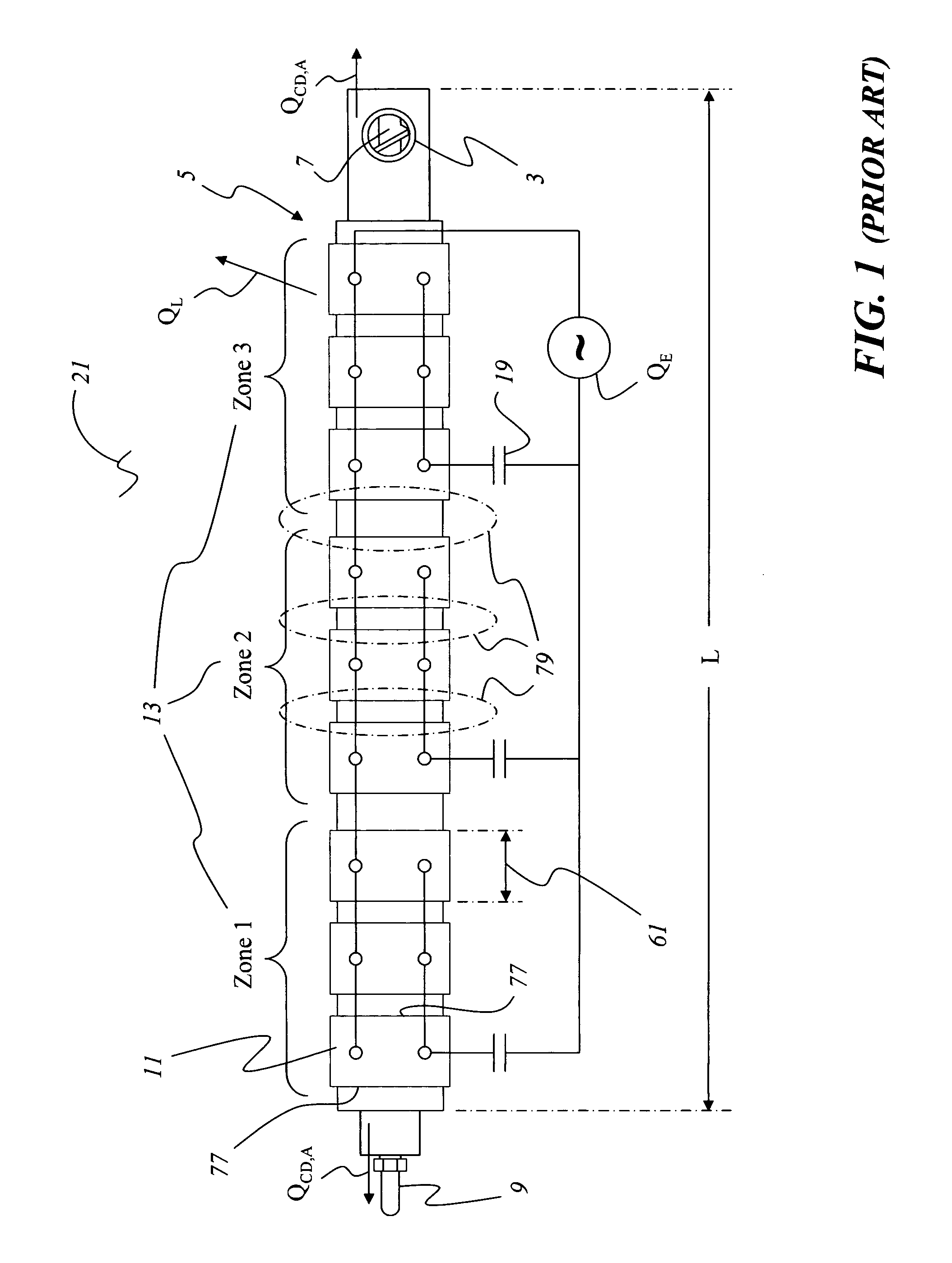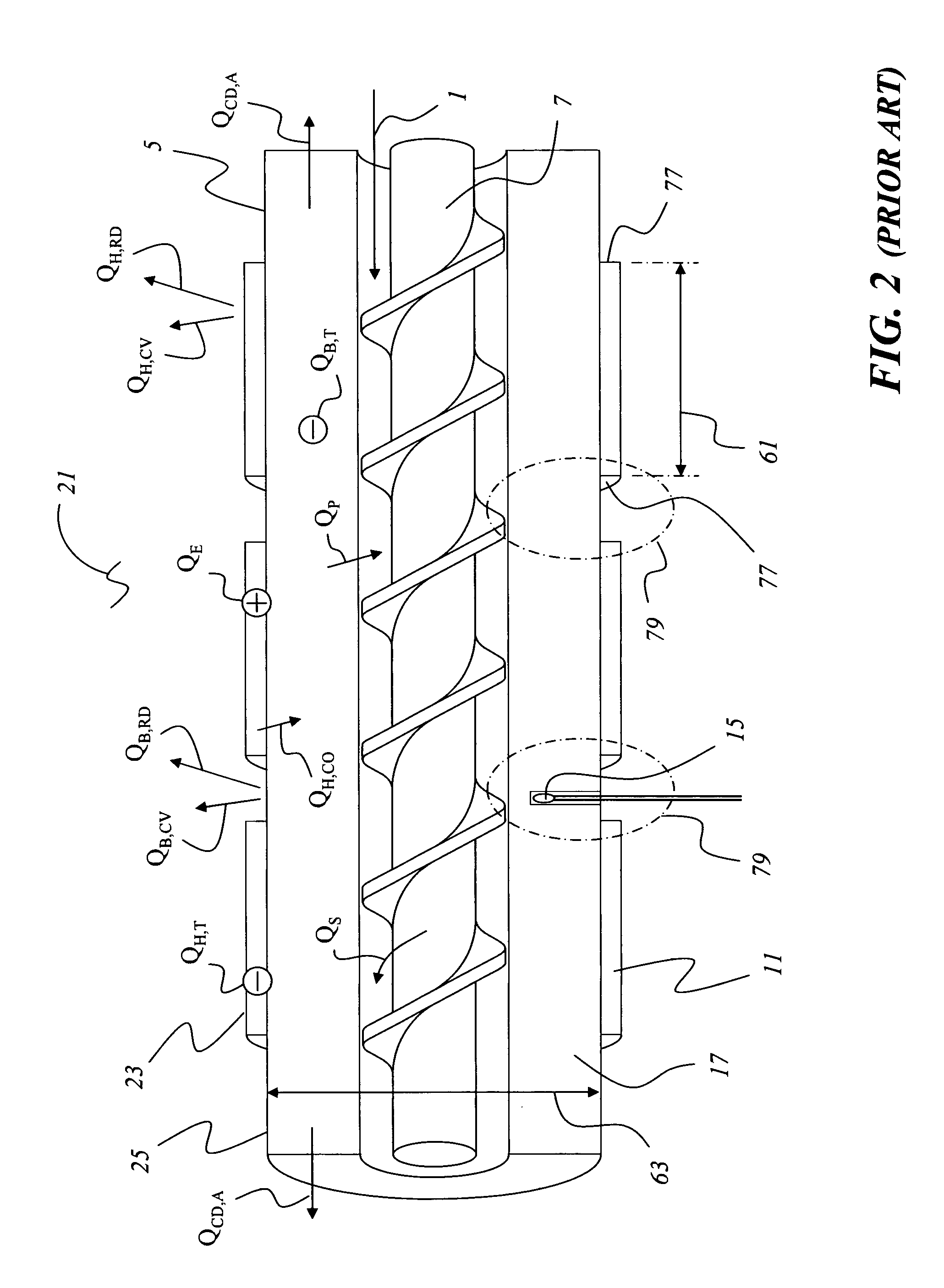Apparatus and method for inductive heating a workpiece using an interposed thermal insulating layer
a technology of thermal insulation layer and workpiece, which is applied in the direction of electric/magnetic/electromagnetic heating, dough shaping, manufacturing tools, etc., can solve the problems of slow control response of oil's thermal mass, limited application of oil-heated devices, and ineffective cost-effectiveness, so as to reduce resistive losses, increase heating efficiency, and reduce electrical resistance
- Summary
- Abstract
- Description
- Claims
- Application Information
AI Technical Summary
Benefits of technology
Problems solved by technology
Method used
Image
Examples
Embodiment Construction
[0054]This discussion begins with reference to FIGS. 2 and 12 to make a comparison of some of the primary differences between heating of workpieces, such as barrels 5, with conventional resistance heaters 11 versus induction heaters with windings 89. Notably, the induction heater generates heat QE directly within the workpiece, while resistance heating must drive heat QH,CO across the contact interface between the resistance heater 11 and the barrel 5. In practice, this allows induction heating to heat the barrel 5 more quickly, even when the windings 89 are in thermal contact therewith. However, the induction windings 89 being in thermal contact with the barrel 5 will create additional thermal mass in the apparatus that will, like that of resistance heaters 11, absorb heat QI,T, thereby slowing the thermal response of the system. Even if the windings 89 do not generate significant resistive heat within themselves, heat QI,CO will conduct across the interface between the heated barr...
PUM
| Property | Measurement | Unit |
|---|---|---|
| Frequency | aaaaa | aaaaa |
| Length | aaaaa | aaaaa |
| Electrical conductivity | aaaaa | aaaaa |
Abstract
Description
Claims
Application Information
 Login to View More
Login to View More - R&D
- Intellectual Property
- Life Sciences
- Materials
- Tech Scout
- Unparalleled Data Quality
- Higher Quality Content
- 60% Fewer Hallucinations
Browse by: Latest US Patents, China's latest patents, Technical Efficacy Thesaurus, Application Domain, Technology Topic, Popular Technical Reports.
© 2025 PatSnap. All rights reserved.Legal|Privacy policy|Modern Slavery Act Transparency Statement|Sitemap|About US| Contact US: help@patsnap.com



